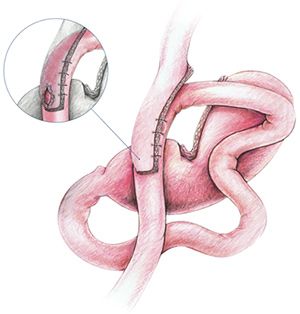Key Steps In The Laparoscopic Mini Gastric Bypass Surgery
Laparoscopic Mini Gastric Bypass (LMGB) surgery has emerged as a popular and effective bariatric procedure for individuals struggling with obesity. This minimally invasive surgery involves restructuring the digestive system to promote weight loss. In this article, we will delve into the key steps of Laparoscopic Mini Gastric Bypass surgery, shedding light on the process, its intricacies, and the benefits it offers.
Patient Evaluation and Selection
The journey of Laparoscopic Mini Gastric Bypass surgery begins with a thorough evaluation of the patient. Not everyone is a suitable candidate for this procedure, and factors such as body mass index (BMI), medical history, and lifestyle are carefully considered. Patients with a BMI of 30 or above, who have unsuccessfully attempted conventional weight loss methods, are often eligible for this surgery.
Preoperative Preparation
Patients go through a thorough preoperative assessment prior to surgery. This includes laboratory tests, imaging studies, and consultations with various healthcare professionals. Patients are also educated about the procedure, potential risks, and the necessary lifestyle changes post-surgery. Preoperative preparation plays a crucial role in ensuring a smooth and successful Laparoscopic Mini Gastric Bypass surgery.
Anesthesia and Port Placement
Once the patient is prepared, the surgical team administers general anesthesia to induce a state of unconsciousness. With the patient under anesthesia, the surgeon makes small incisions in the abdominal wall to create ports for the laparoscopic instruments. These ports serve as entry points for the camera and specialized tools used during the procedure.
Creation of the Gastric Pouch
The next step involves the creation of a smaller stomach pouch. Using the laparoscopic instruments, the surgeon divides the stomach, leaving a small pouch connected to the esophagus. This reduction in stomach size restricts the amount of food the patient can consume, promoting weight loss through reduced calorie intake.
Intestinal Bypass
Following the creation of the gastric pouch, the surgeon then reroutes a portion of the small intestine to connect directly to the newly formed pouch. This bypasses a segment of the stomach and the upper part of the small intestine, altering the normal digestive process. This rerouting results in decreased absorption of calories and nutrients, contributing to weight loss.
Anastomosis and Closure
The surgical team carefully creates an anastomosis, a connection between the stomach pouch and the rerouted section of the small intestine. This connection allows the digestive juices to mix with food, facilitating the digestion process. Once the anastomosis is secure, the surgical team ensures that there are no leaks or complications before proceeding to close the incisions.
Closure of Incisions
With the main part of the surgery complete, the surgeon closes the small incisions made for the laparoscopic instruments. The use of small incisions is a hallmark of the laparoscopic approach, minimizing scarring and expediting the recovery process. The closure of incisions is a crucial step in ensuring the patient’s comfort and minimizing the risk of infection.
Postoperative Care
After Laparoscopic Mini Gastric Bypass surgery, patients are closely monitored in the recovery room before being transferred to a regular hospital room. Postoperative care involves pain management, monitoring for potential complications, and gradually reintroducing liquids and then solid foods. Patients are educated on dietary changes, nutritional supplements, and the importance of regular follow-up appointments.
Monitoring and Follow-Up
The journey doesn’t end with the surgery; in fact, it marks the beginning of a new phase in the patient’s life. Regular monitoring and follow-up appointments with the healthcare team are essential. These appointments allow for the assessment of weight loss progress, adjustment of dietary guidelines, and addressing any concerns or complications that may arise.
Lifestyle Changes and Support
While Laparoscopic Mini Gastric Bypass surgery is a powerful tool for weight loss, its success is contingent on the patient’s commitment to lifestyle changes. Adopting a healthy diet, regular exercise, and behavioral modifications are integral components of long-term success. Support groups, counseling, and ongoing medical guidance play a crucial role in helping patients navigate this transformative journey.
Conclusion
Laparoscopic Mini Gastric Bypass surgery is a sophisticated and effective solution for individuals struggling with obesity. The key steps involved in this procedure, from patient selection to postoperative care, highlight the intricate nature of the surgery and the comprehensive approach taken by healthcare professionals. As advancements continue to refine bariatric procedures, the Laparoscopic Mini Gastric Bypass remains a beacon of hope for those seeking sustainable and significant weight loss.


